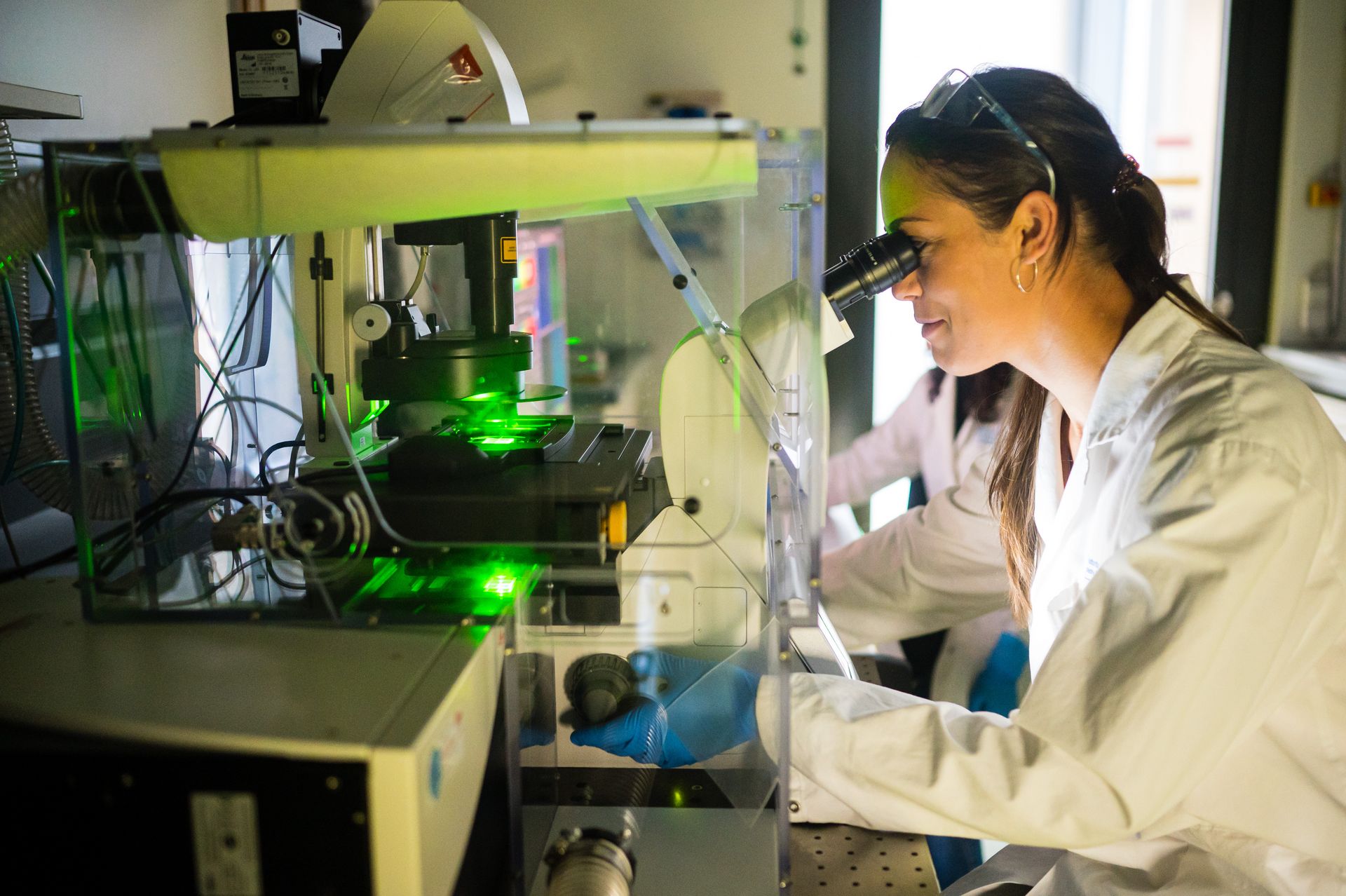
Dr Carsten Volz
About
Carsten Volz studied biology at the Technical University of Kaiserslautern and obtained his diploma in biology in 2004. In 2008, he earned his PhD (Dr. rer. nat.) in microbiology, also from the Technical University of Kaiserslautern. He worked as a microbiologist at the Test- and Research Institute Pirmasens (PFI) until 2009. A Postdoc period at the Department of Pharmaceutical Biotechnology at Saarland University was followed by his work as a microbiologist at the Micro & Molecular Biology Division of the United States Army Public Health Command Europe in Landstuhl. In 2012, he joined the Department of Microbial Natural Products at the HIPS as a scientist.
His research at MINS is mainly related to secondary metabolites of Myxobacteria. This extraordinary group of bacteria produces a vast number of secondary metabolites, often with exciting biological activities. Many of these compounds can potentially be developed into powerful drugs against a number of diseases. Nevertheless, biosynthesis of biologically active compounds is commonly subject to tight regulation on a transcriptional, translational and/or posttranslational level. Therefore, optimization of production in the natural producers is frequently antagonized or repressed. Carsten’s work indicates that this is mainly a consequence of unsuitable cultivation conditions and lacking stimuli, leading to limited production through the underlying regulatory networks. In this light, Carsten Volz focusses on both, studies of regulation of secondary metabolite production and the development of alternative cultivation strategies.
2023
Unusual peptide-binding proteins guide pyrroloindoline alkaloid formation in crocagin biosynthesis
Adam S, Zheng D, Klein A, Volz C, Mullen W, Shirran S, Smith B, Kalinina O, Müller R, Koehnke J (2023)
Nature chemistry 15 (4): 560-568DOI: 10.1038/s41557-023-01153-w
2022
Expanding the Ajudazol Cytotoxin Scaffold: Insights from Genome Mining, Biosynthetic Investigations, and Novel Derivatives
Zeng H, Birkelbach J, Hoffmann J, Popoff A, Volz C, Müller R (2022)
Journal of natural productsDOI: 10.1021/acs.jnatprod.2c00637
An Outer Membrane Vesicle-Based Permeation Assay (OMPA) for Assessing Bacterial Bioavailability
Richter R, Kamal M, Koch M, Niebuur B, Huber A, Goes A, Volz C, Vergalli J, Kraus T, Müller R, …, Pagès J, Lehr C (2022)
Advanced healthcare materials 11 (5)DOI: 10.1002/adhm.202101180
2021
Targeting the energy-coupling factor (ECF) transporters: identification of new tool compounds
Diamanti E, Setyawati I, Bousis S, Souza P, mojas l, Swier l, Haupenthal J, Gibson P, Volz C, stanek w, …, slotboom d, Hirsch A (2021)
ChemRxivDOI: 10.26434/chemrxiv-2021-xq08b-v2
miRMaster 2.0: multi-species non-coding RNA sequencing analyses at scale
Fehlmann T, Kern F, Laham O, Backes C, Solomon J, Hirsch P, Volz C, Müller R, Keller A (2021)
Nucleic Acids ResDOI: 10.1093/nar/gkab268
2020
Leben und Überleben im Boden: Myxococcus xanthus ist Mikrobe des Jahres 2020
Volz C, Krug D, Müller R (2020)
Biol. Unserer Zeit 50 (6): 424-432DOI: 10.1002/biuz.202010721
An ambruticin-sensing complex modulates Myxococcus xanthus development and mediates myxobacterial interspecies communication
Marcos-Torres F, Volz C, Müller R (2020)
Nat Commun 11 (1)DOI: 10.1038/s41467-020-19384-7
2019
Clinical Resistome Screening of 1,110 Escherichia coli Isolates Efficiently Recovers Diagnostically Relevant Antibiotic Resistance Biomarkers and Potential Novel Resistance Mechanisms
Volz C, Ramoni J, Beisken S, Galata V, Keller A, Plum A, Posch A, Müller R (2019)
Front. Microbiol. 10DOI: 10.3389/fmicb.2019.01671
2018
Adaptation of a Bacterial Multidrug Resistance System Revealed by the Structure and Function of AlbA
Sikandar A, Cirnski K, Testolin G, Volz C, Brönstrup M, Kalinina O, Müller R, Koehnke J (2018)
J. Am. Chem. Soc. 140 (48): 16641-16649DOI: 10.1021/jacs.8b08895
2017
Structure and biosynthesis of crocagins: polycyclic postranslationally modified ribosomal peptides from Chondromyces crocatus
Viehrig K, Surup F, Volz C, Herrmann J, Abou Fayad A, Adam S, Kohnke J, Trauner D, Müller R (2017)
Angew. Chem. (56): 1-5DOI: 10.1002/anie.201612640
2015
Pinensins: the first antifungal lantibiotics
Mohr K, Volz C, Jansen R, Wray V, Hoffmann J, Bernecker S, Wink J, Gerth K, Stadler M, Müller R (2015)
Angew. Chem. Int. Ed. Engl. 127 (38): 11254-11258DOI: 10.1002/anie.201500927
2014
Biosynthesis of crocacin involves an unusual hydrolytic release domain showing similarity to condensation domains
Müller S, Rachid S, Hoffmann T, Surup F, Volz C, Zaburannyi N, Müller R (2014)
Chem. Biol. 21 (7): 855-865DOI: 10.1016/j.chembiol.2014.05.012
2012
Enhancer binding proteins act as hetero-oligomers and link secondary metabolite production to myxococcal development, motility and predation
Volz C, Kegler C, Müller R (2012)
Chem. Biol. 19: 1447-1459DOI: 10.1016/j.chembiol.2012.09.010
